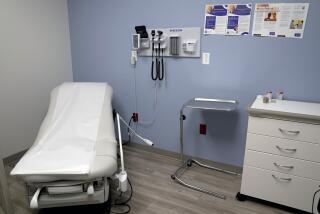Stigma over breast pumping at work makes the gender pay gap worse

For a breastfeeding mom just returning to work, Sarah Madden has what would be considered the best-case scenario. Her employer, the nonprofit Guidestar, has a brand-new Oakland office with a lactation room that the 36-year-old can duck into whenever she has to pump. The ability to video chat limits her need to travel. And, she describes her co-workers as generally accepting.
Yet, just a couple months back from maternity leave, Madden can already see the “longer-term consequences” breastfeeding can have on her career. She has to leave meetings early; she can’t schedule back-to-back calls all day; she feels pressured to travel more. On a recent conference call, someone called her out for not flying cross-country for the meeting. “I have a baby,” she explained.
Not all women have it as good as Madden, and many working moms feel that they get stigmatized or penalized for breast pumping at work. A new survey from Aeroflow, a breast pump provider, found that half of the 773 women surveyed had concerns that breastfeeding could affect their career growth. Half of the breastfeeding working moms also said they had considered a job or career change.
“There’s not a forgiving culture for new moms in the workplace,” says Alexis Diao, a producer at NPR with two young kids. “There is intense pressure to prove that you’re the same woman before childbirth and before pregnancy.”
Motherhood is one of the biggest causes of the gender pay gap. Women’s earnings drop significantly after childbirth, whereas men’s don’t. That divergence starts the day new moms get back to the office, especially for those who choose to breastfeed.
“There’s a real incompatibility in the U.S. with breastfeeding and continuing to work full-time,” said Phyllis Rippey, a sociologist at the University of Ottawa who has studied breastfeeding and women’s earnings.
Not all moms choose to or are physically able to breastfeed; for those who do, the American Academy of Pediatrics recommends that infants be breastfed during the first year for the best health outcomes. Since only 15% of U.S. workers get any paid time off to care for newborns, most working moms must pump at work to keep up with those recommendations.
It’s hard to measure exactly how much breastfeeding hurts women’s long-term earnings, because few surveys look at the two together, Rippey said. In a 2012 study, she looked at a rare data set that quantified both issues for mothers with children born from 1980 to 1993. They found that women who breastfed for at least six months suffered more severe and prolonged earnings losses than mothers who breastfed for less time or not at all.
“I call it a breastfeeding penalty,” Rippey said.
Women face a stigma for taking time away from their jobs, and they run up against the reality that the workday doesn’t stop when they leave to go pump. Breast pumping requires a strict schedule that doesn’t fit squarely in the traditional workday. Pumping times can vary anywhere from 15 minutes to an hour. Women have to pump multiple times during the workday. That doesn’t mesh with the workday.
“Having to step away and pump when you’re at the office can be an isolating experience. You are essentially locking yourself in a room and, in your deepest insecurities, confirming to people that despite your best efforts, you have changed,” Diao said. (NPR, where she works, has on-site lactation rooms.)
Diann Burns, a Virginia-based attorney with three kids, said that a former employer said her productivity lagged when she started breast pumping — just before laying her off. “There is an ‘I’m-doing-less-work attitude’ about it, in spite of the fact that I’m not taking a smoke break like other employees,” she said. “No employee works every minute. I know I have to get my work done and then pump around it.”
Workplaces have improved conditions for breastfeeding moms in the last 30 years. A 2010 amendment to the federal Fair Labor Standards Act requires employers to provide reasonable break time and a place other than a bathroom for women to pump for as much as one year after the birth of a child. Twenty-nine states also have laws related to breast-pumping in the workplace; California’s laws are some of the strongest. About half of employers have on-site lactation rooms, up from 28% in 2014, according to a 2018 survey of more than 3,000 employers from the Society for Human Resource Management.
Still, many women don’t have workplaces with such accommodations. Only about 40% of women have access to a private space, other than a bathroom, to pump, a 2016 study from the University of Minnesota found.
“There is still a large problem with compliance,” said Galen Sherwin, a lawyer at the American Civil Liberties Union. “There’s this notion that women are seeking ‘special’ accommodations, as opposed to seeking conditions that make it possible for them to return to work when they have babies.”
Rippey found that women’s earnings took a big hit because many of them left the workplace altogether. But women are more likely to quit breastfeeding than quit their jobs entirely. The harder that workplaces make it for moms to pump, the less likely they’ll stick with it, the University of Minnesota study found. Women who had accommodations were 2.3 times more likely to continue exclusively breastfeeding at the six-month point, the researchers found.






